
All categories
Featured selections
Trade Assurance
Buyer Central
Help Center
Get the app
Become a supplier

(18252 products available)






 Ready to Ship
Ready to Ship







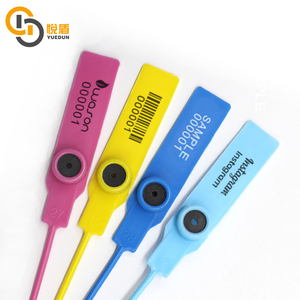








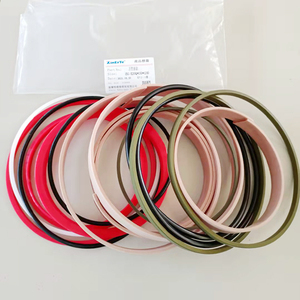


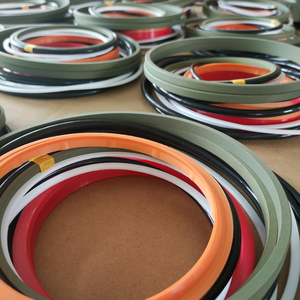


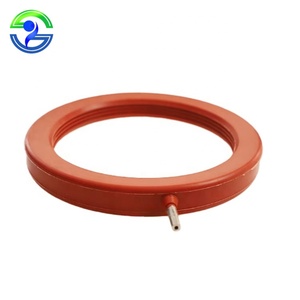
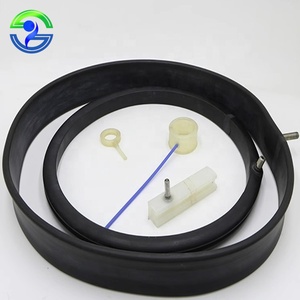


Inflatable seals come in diverse types, each tailored to specific operational needs. Primarily fabricated from elastomers like EPDM, silicone, and neoprene, these seals offer unequaled flexibility and durability against extreme temperatures and chemicals. Below are the main inflatables in demand:
Inflatable Door Seals
Inflatable door seals, applied in diverse settings like aerospace, marine, and automotive sectors, offer outstanding insulation and sealing. Their ability to expand and contract allows them to conform precisely to door contours, eliminating gaps and ensuring airtight closure. Common materials include silicone and neoprene, chosen for resilience against temperature extremes. These seals also counteract noise and vibration, enhancing cabin comfort. In emergencies, their quick resetting capacity is vital for operational efficiency. This adaptability in critical and routine applications underscores their essential role in varied environments.
Inflatable Pipe Seals
Pipe insulators are engineered to provide an optimal seal for pipelines in fluctuating temperatures and pressures. Their inflatable design allows for easy installation and adjustment, making them perfect for dynamic industrial environments. The seals prevent leakages and contamination, ensuring system integrity and safety. Common applications include the pharmaceutical, chemical processing, and food and beverage industries. Materials like EPDM and Viton are selected for their chemical resistance and durability. These pipe seals extend pipeline life and reduce maintenance needs, making them critical for operational efficiency in heavy-duty businesses.
Inflatable Wall Seals
Inflatable wall seals are critical in creating airtight barriers in such settings as clean rooms, laboratories, and manufacturing facilities. These seals are designed to be integrated into construction elements or temporary enclosures. They provide a flexible, tightly-fitting barrier against pollutants, dust, and unwanted airflow. Materials like silicone and polyurethane provide durability and flexibility. Inflatable wall seals enhance energy efficiency by lessening the need for heating and cooling systems. In addition, they maintain cleanroom standards in the pharmaceutical and tech industries. Their adaptability for permanent and temporary applications expands their use in varied businesses.
Inflatable Custom Seals
Inflatable custom seals are tailored to meet specific requirements, offering flexibility and precision. These seals can be designed in various shapes, sizes, and pressure ratings to fit unique applications across industries such as aerospace, automotive, and construction. Materials like EPDM and silicone ensure durability and resistance to harsh environments.
Inflatable rubber seals possess unique features that make them effective in sealing and cushioning roles across different products. Built from emission-free and chemically resistant materials such as silicone, neoprene, and EPDM, these seals are resilient to temperature extremes and chemical exposure. Some of their main features include:
Flexibility and Conformity
A key feature of inflatable seals is their flexibility and ability to conform to divergent surfaces. This ensures an airtight seal even on irregular or uneven surfaces. The flexibility arises from the combination of elastic materials and the inflatable design, allowing the seal to adjust to minor variations. This ensures that in all uses, from door seals in aerospace applications to wall seals in construction projects, the seal provides a tight, leak-proof barrier.
Temperature Resistance
Inflatable seals offer exceptional temperature resistance compared to conventional seals. With materials like EPDM and silicone, they maintain performance in environments ranging from -40°F to +300°F. This makes them ideal for extreme environment applications in the automotive and aerospace industries. The durability against breakdown ensures the same sealing effectiveness for a long period even with thermal fluctuations.
Chemical Resistance
Many inflatable seals are specifically designed to withstand diverse chemicals and harsh environments. Materials such as Viton and neoprene resist oils, solvents, and corrosive substances. This feature is extremely critical in such sectors as the pharmaceutical, petrochemical, and food processing, where exposure to chemicals is inevitable. The chemical resistance ensures the seal remains structurally sound, thus avoiding leakage and contamination.
Easy Installation and Maintenance
Another key aspect of inflatable seals is their ease in installation and maintenance. Many designs are fitted with simple inflation mechanisms, allowing quick adjustments while on the move. This feature is ideal in industrial usages where downtime must be kept as low as possible. Furthermore, the ability to deflate when necessary permits easy access for maintenance and repairs. This minimizes labor costs and enhances operational efficiency for users.
Inflatable seals are critical components in keeping operations effective and safe within machinery in distinct industrial applications. Their flexibility, durability, and ability to conform to uneven surfaces pose an airtight, leak-proof seal on HVAC, marine, and aerospace doors. Inflatable seals stymie energy loss in building systems, contributing to enhanced energy efficiency and lowered heating and cooling costs. In pharmaceutical and chemical processing, they prevent cross-contamination and hostile material leakage, thus safeguarding product integrity and quality. In addition, these seals withstand extreme fluctuations in pressure, temperature, and chemical exposure, extending their viability and reducing maintenance requirements. Ultimately, inflatable seals improve performance, safety, and longevity in distinct industrial settings.
Aerospace Industry
Inflatable seals play a critical role in the aerospace industry. Used in door and hatch systems, they provide airtight seals critical for cabin pressurization and temperature control. The ability of these seals to conform to the intricate surfaces guarantees a tight fit even with the vehicle's shape during flight. Materials such as silicone and EPDM are selected for UV and thermal resistance since they maintain flexibility under extreme conditions.
Marine Industry
In the marine industry, inflatable seals are fundamental to ship and boat hatches, access doors, and portholes. They prevent water from leaking in, thus ensuring the vessel's integrity and safety. The adaptability of these seals enables them to fit irregular surfaces, improving their effectiveness in maintaining enclosed areas against water intrusion. With natural weathering and water exposure, the chemical resistance and durability of materials like neoprene and EPDM are essential for their long-term functioning.
Construction Industry
Inflatable seals, applied in the construction industry, ensure windows, doors, and wall systems are energy efficient. These seals prevent air leaks from around enclosures, hence improving energy efficiency and reducing heating and cooling costs. The versatility of inflatable wall ties allows their use in designed and temporary structures. This adaptability contributes to the system's overall energy performance. In addition, they maintain cleanroom standards in the pharmaceutical and high-tech industries. Their capacity to maintain optimal environmental conditions in sensitive production processes is vital to product quality and regulatory compliance.
HVAC Systems
Inflatable seals are critical in HVAC systems for ductwork and ventilation. In air handling units, they provide superior seals, preventing airflow leaks that waste energy and reduce system efficiency. By ensuring a tight seal, these inflatable seals improve the system's energy efficiency and indoor air quality. Materials that withstand repeated inflation cycles and environmental conditions, like silicone and EPDM, are chosen. This ensures they function effectively over a long period.
Pharmaceutical Industry
In the pharmaceutical industry, where cross-contamination and cleanliness are critical, inflatable seals are used in clean rooms and controlled environments. These seals prevent the escape of pollutants and ensure that cleanroom standards are maintained. Materials with unparalleled sterility and durability, such as silicone, are chosen to withstand exposure to sterilizing agents. The seals enable energy conservation, protecting the high cost of keeping these critical environments.
Selecting the ideal inflatable seal requires buyers to consider the operational environment, seal materials, and the application at hand. The first step is identifying the operating environment since temperature extremes, and exposure to chemicals determine the seal material. For example, inflatable seals for aerospace applications are made of temperature-resistant materials such as silicone or EPDM, while seals used in chemical processing might contain Viton, highly resistant to diverse solvents and acids.
Next is the pressure differential: inflatable seals for low-pressure applications may not need the heavy-duty seal material required for high-pressure environments. Concerning size and shape, inflatable seals must meet the precise dimensional requirements of the sealing surface to ensure effective sealing. The user's preferred inflation mechanism should also be compatible with available equipment. Additional factors like the operating cost must be considered. Materials with longer lifespans and minimal maintenance reduce the total cost of ownership in the long term. By carefully analyzing these aspects, businesses can select inflatable seals that will perform effectively and reliably for their intended usage.
A1: Inflatable door seals are typically constructed from elastomeric materials like EPDM, silicone, and neoprene. These materials offer a good balance of flexibility, durability, and resistance to temperature extremes and environmental conditions. For instance, silicone is ideal for high-temperature applications, while EPDM is commonly used for outdoor environments due to its ozone and UV resistance.
A2: Inflatable pipe seals work by creating a tight, adjustable seal around pipes. They prevent leaks and contamination by conforming to the pipe's surface, providing a tight barrier against environmental elements, contaminants, or process fluids. In addition, the seals allow easy installation and adjustment, making them ideal for dynamic industrial operations.
A3: Inflatable seals improve energy efficiency by preventing unintended air leakage. In HVAC systems, for example, they create tight seals around ducts, doors, and other openings, minimizing the exchange between indoor and outdoor air. This reduces the energy required for heating and cooling, hence lower energy costs and improved indoor air quality.
A4: Yes, inflatable seals are highly customizable. They can be designed to fit specific shapes, sizes, and pressure requirements, making them ideal for unique applications. Custom seals are tailored to meet the particular needs of industries such as aerospace, automotive, and construction, providing a flexible and precise sealing solution.
A5: Inflatable seals require minimal maintenance. Regular inspections for wear, damage, or malfunction are advisable. Depending on the type of seal, cleaning may be necessary to remove debris or contaminants. In some industrial applications, lubrication may extend the seal's life. Nonetheless, maintenance requirements are generally lower.